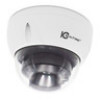IC Realtime IPFX-D80V-IRW1 Product Manual - Page 137
Global Configuration
 |
View all IC Realtime IPFX-D80V-IRW1 manuals
Add to My Manuals
Save this manual to your list of manuals |
Page 137 highlights
the moving distance of the target should be larger than its width and no less than 15 pixels (CIF image). Reduce the complexity of surveillance scene as possible as you can. Intelligent analysis function is not recommended to be used in scene with dense targets and frequent illumination change. Avoid areas such as glass, reflective ground, water surface, and areas interfered by branch, shadow and mosquito. Avoid backlight scene and direct light. 5.8.1 Global Configuration Set global rules for IVS analysis, including disturbance filter, depth of field calibration, and valid motion parameter for targets. Calibration Purpose Determine corresponding relationship between 2D image captured by the camera and 3D actual object according to one horizontal ruler and three vertical rulers calibrated by the user and the corresponding actual distance. Applicable Scene Medium or distant view with installation height of more than three meters. Scenes with parallel view or ceiling-mounted are not supported. Calibrate horizontal surfaces, not vertical walls or sloping surfaces. This function is not applicable to scenes with distorted view captured by super wide-angle or fisheye camera. Notes Calibration Drawing Calibration area: The calibration area drawn should be on a flat surface. Vertical ruler: The bottom of three vertical rulers should be on the same horizontal surface. Select three reference objects with fixed height in triangular distribution as vertical ruler, such as vehicle parked at roadside or road lamp poles. Arrange three persons to draw at each of the three positions in the monitoring scene. Horizontal ruler: Select reference object with known length on the ground, such as sign on the road, or use a tape to measure the actual length. Calibration Verification After setting the ruler, draw a straight line on the image, check the estimated value of the straight line, and then compare this value with the value measured in the actual scene to verify calibration accuracy. In case of major difference between the estimated value and the actual one, fine-tune or reset parameters until the error requirement is met. Procedures Select Setting > Event > IVS > Global Setup. The Global Setup interface is displayed. See Figure 5-21. Event 129















